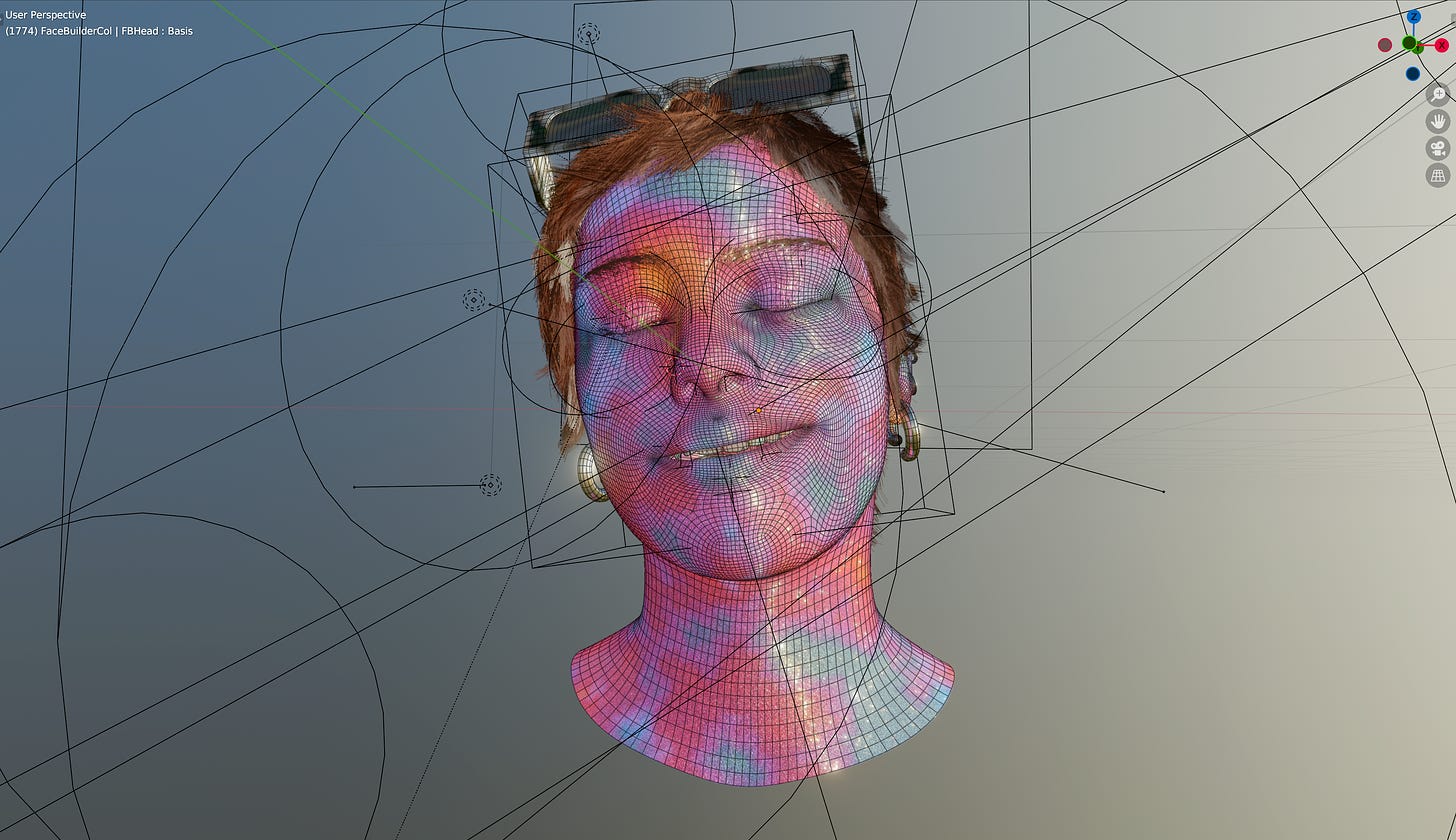The Ethics of Digital Humans within Fashion Modelling (and beyond)
Co-founder of tech startup Loanhood and former model, Jade McSorely, on the digitisation of humans in Fashion & why we should be paying attention
Photo Credit: Creative Technologist Callum Toy
The digitisation of humans is occurring within the fashion model industry, with human models developing digital counterparts through synthetic media (avatars) or photorealistic 3D creation (photogrammetry and volumetric capture). Brands are adopting such technologies to create and use digital models to solve issues of productivity, cost and even claiming sustainability and opportunities for diversity (such as Levi’s). Balenciaga digitally scanned models during the pandemic when they couldn’t show their AW21 collection in-person, creating an immersive videogame-style presentation, Afterworld: Age of Tomorrow. Ecommerce stores are using digital models to sell items without the need for the physical human. In fact, some stores are creating computer-generated digital models with no need of a human whatsoever.
There is a case to be argued that a society immersing itself into digital spaces and experimenting with online personas can be harnessed to create sustainable paths for fashion without the requirement of physical possessions or bodies (Vogue Polska & BCG, 2022). In fact, one model recently claimed that she could use her AI model could help her get more modelling work (BBC, 2024).
However, there is lack of knowledge of the social impact and the wider ethical implications that may occur from using technology to represent human likeness (not to mention the environmental impact due to the energy required for the creation and maintaining these digital assets). As a former model, who does not own any image that may be taken of them, it was still a shock to me that I didn’t own a digital scan of myself despite the personal data attached to this 3D asset of myself. I decided to explore this further within my PhD research at the University for the Creative Arts, working alongside The British Fashion Models Association (BFMA), to understand the opportunities and risks of digitising real-life humans within a fashion context.
Why should we be paying attention?
As our digital identity becomes more prevalent, technology advances and virtual try-on becomes part of the customer journey, this will only increase the need for security and safety measures to be put in place to protect, not only models, but consumers. When someone is digitally scanned, it is not just your facial features that are digitised but your measurements, your movement (if captured volumetrically), your voice, the unique colour of your skin, hair, eyes... Suddenly your human ‘metadata’ becomes a commodity that can be exploited and misused if placed in the wrong hands with the wrong use of technology.
Take Shereen Wu, for example, who walked for designer Michael Costello who later posted an image on social media removing Wu’s face and race with AI (The Guardian, 2023). Not only was this a dehumanising act but disempowering. In an industry that has been criticised for the use of photoshop to create unrealistic images of beauty and body shapes, now the fashion industry must face the ethical challenges that the use of AI will create.
What needs to be done?
There needs to revision of the current data laws and regulations to ensure that these are keeping up with the technological advancements. The BFMA and I have revised contracts to include clauses that refer to the creation and use of digital humans/avatars by clients as a step to ensure the protection of model’s livelihoods and well-being. We have also established a statement of model’s rights so that working fashion models understand their rights in relation to these technologies. Ultimately, I argue and will continue to campaign, that the human represented should retain full autonomy and ownership of their digital counterpart and all data associated.
Last but definitely not least, there needs to be an awareness, transparency and accountability by brands adopting such technologies. For innovation within this area to make a genuine contribution to sustainable development, there needs to be coherent strategies and critical thinking that looks at how it may affect both planet and people (Shift, 2022). Whilst digital platforms offer new realities and creative economies, we must consider how this transformation of humans sustains a connection that is of value to humanity whereby all can inclusively benefit.
Listen to my TEDx talk here: A Fashion Manifesto for the Metaverse

Britain should turn its back on fast-fashion like Shein, not roll out the red carpet
With Shein reportedly considering a London stock market listing amid concerns over onerous regulations in the US, why isn’t the government supporting the UK fashion industry? Instead, it is sucking up to the Chinese fast fashion giant Shein, writes Victoria Moss for The Standard
The Biba Story, 1964-1975
The Biba Story, 1964 - 1975 - an upcoming exhibition at the Fashion Textile Museum exploring how fashion phenomenon Biba blossomed to become the world’s first lifestyle label.
22nd March - 8th September at the Fashion Textile Museum.
Fashion Roundtable's Substack is a reader-supported publication. To receive new posts and support my work, consider becoming a free or paid subscriber.





